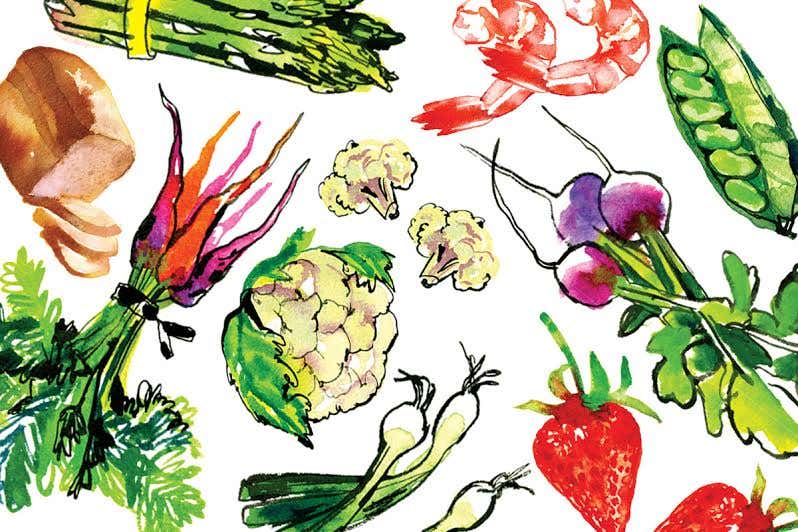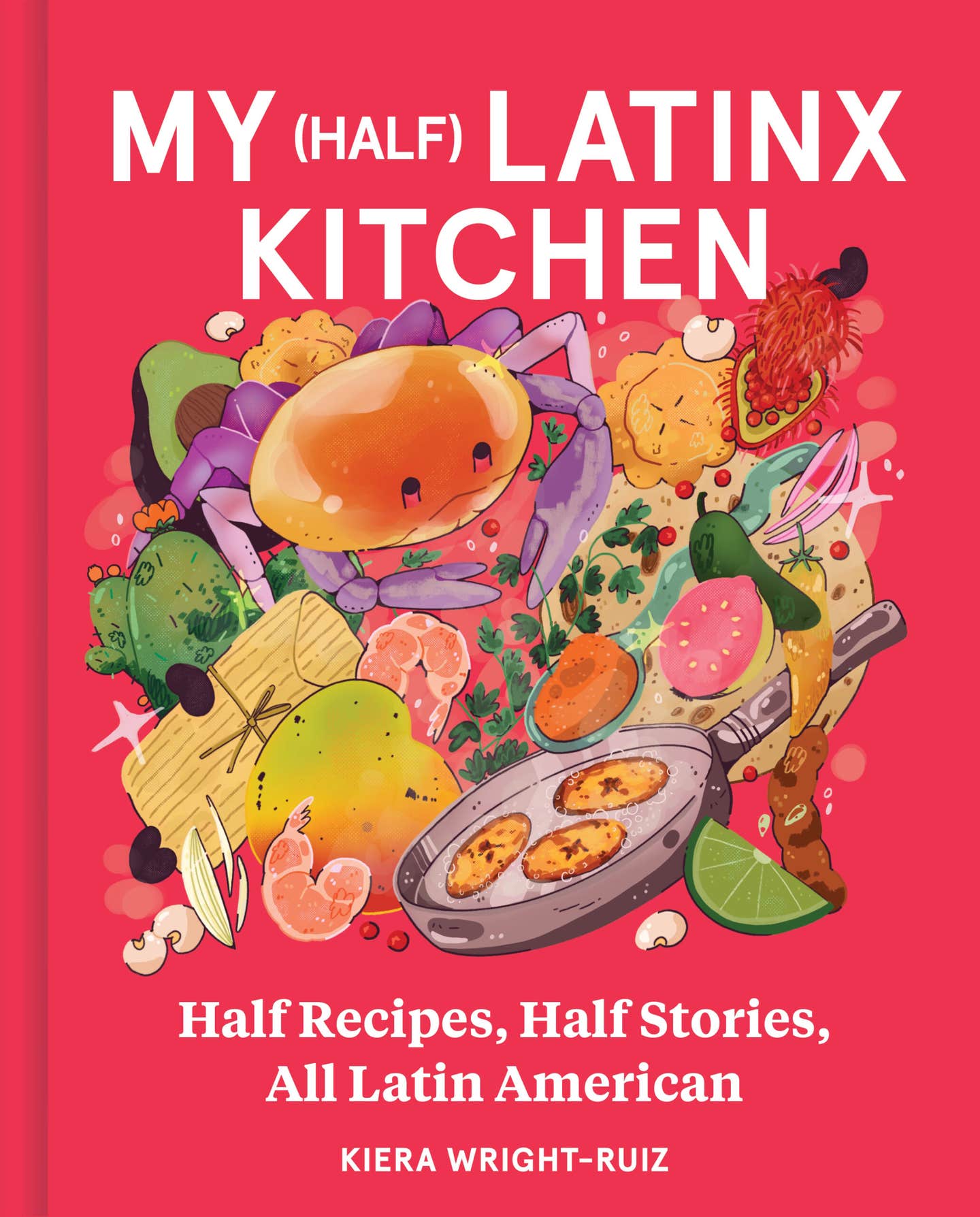
Northern Star: Herring in Northern Europe
From Holland to the Arctic Circle, the beloved herring is in a class by itself.
Whitecaps flash like strobe lights under a bleak October sky, and my ferry pitches and rolls—but arriving at Åstols Rokeri, Bjorn Edlund's restaurant on the tiny island of Åstol off of Sweden's west coast, I find a safe haven and a traditional lunch. Edlund sets a plate of marinated herring on the burlap tablecloth in front of me, along with a boiled potato, some sour cream, and a bottle of strong Mariestad beer. The door swings open and a hulking man in a black nylon windbreaker, jeans, and a pair of battered clogs steps in. A commercial fisherman, Rolf Karlsson has been at sea all morning. As Edlund hands him a herring plate, he pulls off his wet jacket and begins to talk. ''In the great period, there was so much herring,'' he tells me, spearing a forkful of the fish. ''The sea was boiling with them. They would come in the autumn, and you could fish them all the way in to the mainland. We'd go out for a week at a time and salt the herring on the boat.''
Karlsson is Swedish, but he could be Danish, Norwegian, or Dutch. Herring has been fished for centuries throughout Scandinavia and into the North Atlantic, and eaten—mostly cured, marinated, or smoked—from near the Arctic Circle to the Low Countries and beyond. Far beyond. I first came upon it in my childhood in Connecticut, watching my father dig into a jar of standard-issue Vita, a taste he'd acquired at the table of his Polish-born, Orthodox Jewish parents. That's one cultural reference for the strong-flavored fish, but there are others. A Swedish-American friend from Minnesota, spotting Vita in my refrigerator, inquired if my background was partly Scandinavian. ''The only people I've ever seen eat that stuff,'' she said, wrinkling her nose, ''are my relatives.''
In truth, herring has been feeding much of Europe for almost a thousand years. Salted herring originated basically out of necessity: The fish was so abundant—lore has it that fishermen were able to wade into Scandinavian waters and grab it by the handfuls—that it often went bad before it could be consumed. When the Hanseatic League was established in northern Germany in the 13th century, salted herring, which could travel long distances without spoiling, became a valuable commodity. Lubeck, located about 150 miles south of Copenhagen, had salt houses that could provide several hundred tons of the fish a month to central Europe. It was shipped to Rostock and Danzig, as well as south down the Rhine to Catholic Germany.
Yet herring has always been unpredictable. Several times in history, vast schools have greatly diminished in size. The fishermen of Åstol know this only too well: In the late 1960s, the fish all but disappeared. ''Before 1968,'' says Edlund, ''every man on this island fished herring. Today there are only 15.'' Residents of the island blamed the boats, the water, and the Norwegian seals, or wondered if the herring had simply been fished out. ''All of a sudden,'' says Karlsson, ''it was gone.''
These days, much of the herring consumed in Sweden is imported from Norway, Denmark, and Iceland. But the Swedes like herring too much to complain. They eat a type of herring called sill (sild in Denmark) that is often marinated in a mixture of vinegar, onions, and spices, or in cream or mustard. They eat matjes herring, which is sill that has been skinned and fileted, then cured in sandalwood, which tints the fish red. They eat herring anytime, but especially at Christmas lunch, at Easter, at the Midsummer feast, and on other special occasions. And the majority of it is still prepared as it has been for centuries.
I try a dozen varieties at Ulriksdals Wardshus, a white manor house set on acres of woodlands near Stockholm, where chef Karl-Heinz Krucken presides over one of Scandinavia's renowned smorgasbords (literally, ''bread-and-butter tables''). The buffet includes smoked eel, reindeer, Swedish meatballs, and two kinds of gravlax, but the centerpiece is the herring: bathed in tomato or curry sauce, panfried, mixed with anchovies and apples—17 preparations in all. Despite the collection of first-growth bordeaux in the wine cellar, Krucken insists the herring be eaten with a traditional shot of aquavit and a mug of beer. It's an idyllic Scandinavian scene, but Krucken worries about the future. ''Someday you'll tell your grandchildren, 'I was in Sweden and they still had herring,''' he says. ''A fairy tale!''
For now, at least, importers have left Sweden awash in herring. At Stockholm's Ostermalms Saluhall, a 19th-century market that has been converted into a gourmet food court, Ulf Elmqvist—whose family has been selling herring here for 73 years—shows off a display case crammed with 15 varieties. He explains that sill, North Sea herring, is usually soaked in a brine, then desalted and pickled before being marinated in various ingredients, while the smaller and leaner stršmming, from the Baltic Sea, is often purchased fresh and eaten grilled, fried, or baked. To prepare one as if it were the other would be unthinkable. ''Who would buy it?'' he asks.
What sells so well at Ostermalms Saluhall would be disdained in neighboring Denmark, where I find herring on nearly every street. In fact, Copenhagen owes its very existence to fish: Its name means ''merchant's harbor'', and those merchants dealt in herring, among other fish. The Danes ruled Sweden from 1397 until 1521 and introduced sill there, but they maintain that the Swedes still haven't got it right. In Denmark, it is typically eaten in long filets, not in Sweden's bite-size bits, and most every day, not just on special occasions. Many families—and restaurants—also flavor their own herring. They buy the fish presalted and then marinate it in wooden barrels or plastic buckets, making it, as they say, ''from the bottom''.
A symbolic barrel hangs above the entrance to the Nyhavns Faergekro restaurant in Copenhagen's harbor, where customers fill an underground dining room for a midday meal of herring. They eat it hot—fried in vinegar or boiled in cream—or at room temperature in a selection of eight marinades. My favorite, pickled filets in a red marinade of cloves and cinnamon, comes from Christiansø island, between Sweden and Poland, and is revered by herring aficionados throughout the country. ''There are other places in Denmark that attempt to make it like this, but they can't,'' the owner of a Copenhagen fish store that sells the product tells me later. ''We tried one of the others, and our customers said, 'Don't do that again.'''
That night, I eat herring at a downtown restaurant with Rasmus Bo Bojesen, a connoisseur of all things Danish, who owns a catering business and a restaurant in the Tivoli Gardens. Bojesen makes his own distinctive chocolates—flavored with ingredients such as saffron, tea, and nutmeg—and astounding, if unconventional, herring. ''What we normally eat is industrially made because most people can't afford, or don't know how, to do it right,'' he says. He gestures at the fish that's on our plates. ''This is industrial herring,'' he informs me. ''I can tell just by looking at it. Come try mine.''
Before I do, I sample some industrial herring closer to its source. The P. Lykkeberg plant in northwestern Sjaelland buys fresh herring, processes it, and packages it in more than thirty flavors in jars and tins. Susanne Folmer, the owner of the plant, invites me to lunch at the historic Dragsholm Slot, a nearby castle. At the restaurant, she lays a filet of Lykkeberg herring on a piece of coarse bread and takes a bite. ''You can get tired of all kinds of food, but never herring,'' says Folmer. As for chefs such as Bojesen, who insist on hand-marinating their herring in small batches, Folmer has trouble hiding a smirk. ''That's foolish,'' she says. ''People say to me all the time, 'In the old days I wanted to do it myself, from the bottom, but now I realize you do it just as I would.'''
After lunch I visit Bojesen's catering facility on Copenhagen's industrial backside. He emerges from the kitchen with two glistening pieces of herring—one in a marinade of apples and horseradish, the other in tomato and grainy mustard. I try both and experience a culinary epiphany. The flavors are clean, unexpected, perfectly harmonious. I pronounce the herring the best I've had. Then I go to Holland.
Since its only competitor is an Indonesian import, rijsttafel, one can safely call herring the national food of the Netherlands. Strips of fatty matjes—which are lightly cured in salt and enzymes from their pancreases but never marinated—are sold at stands on beaches and city streets for about $1.50. Deheaded, deboned, and skinned, they are sometimes eaten in a bun with onions, but more often are simply held by the tail and lowered into a waiting mouth. These matjes are not the sandalwood-spiced herring of the north, but rather a type of herring that is fished at the mouth of the Baltic and near Scotland's Outer Hebrides in early summer, when the fish's fat content is between 15 and 22 percent. (At other times of the year, when the percentage dips into the single digits, matjes are nearly worthless.) Because the fish are flash-frozen on the boats, matjes are available year-round. Nevertheless, consumption is highest during the summer. Traditionally, the matjes season began each year with a festival called Vlaggetjesdag (Flag Day) held in late May or early June. Ships would leave Scheveningen, a harbor town in The Hague whose coat of arms features three herring, and race to be the first one back with a catch of matjes. In mid-June, even today, a ceremonial tub of the herring is delivered to the Netherlands's Queen Beatrix, signaling that the season is at its peak. By late July, it is over.
Scandinavians consider herring a part of life, but in Holland it inspires a cultish mania. ''Many Dutch who have emigrated maintain a specific longing for it,'' says the aptly named Robert Carp, managing director of the Dutch Fish Marketing Board. He reports that stores at Amsterdam's Schipol Airport do a robust business in packaged matjes filets, and scoffs at people who worry about the future of herring. ''No animal on this planet is more efficient at reproduction,'' he says. For lunch, we buy herring at a local market. Carp teaches me how to cock my head, hold the herring by its tail above my mouth, then lower it in and take a bite. When I do, I taste a creamy fishiness utterly different from any other herring I've ever had. ''This is real herring,'' he says, and I see what he means. Bojesen's fish was transcendent, but here there is no marinade to hide the herring's natural flavor. ''More herring is consumed in Holland than any other fish,'' Carp says. ''You have consumers who are mad about it and can't stop eating it, and others who won't touch it.'' He eyes me to determine my level of passion.
I think I know. Leaving the cobbled courtyard of the Dutch parliament in The Hague later that day, I come across Haringkraam Buitenhof, a stand that advertises the best herring in Holland. I've eaten little but herring for a week, but my interest is piqued, and at the sight of three customers tossing back their heads for moist filets, I can't help myself. Pulling coins from my pocket, I step in line.
Keep Reading
Continue to Next Story










